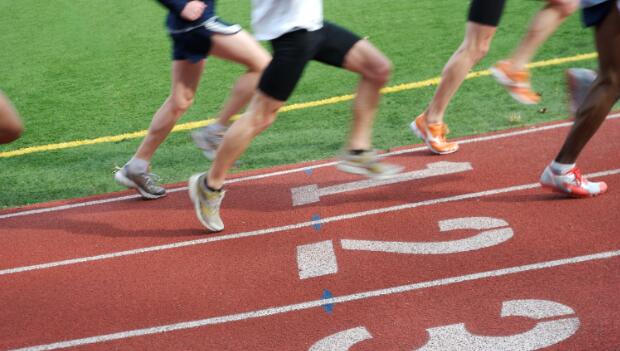
Maximizing speed and performance in distance running can be achieved by improving lactate threshold and running economy. While VO2max—the maximum volume of oxygen your muscles can consume per minute—has received most of the attention among runners and coaches, a high VO2max alone is not enough to attain competitive performances.
A high VO2max simply gains one access into the club, since a runner cannot attain a high level of performance without a high VO2max. But, while you can improve your VO2max, it is largely genetically determined.
More: Maximize Your VO2Max
The other two major physiological players of distance running performance—lactate threshold (LT) and running economy (RE)—influence your performance more, and are more responsive to training.
From the time of the classic study published in Medicine and Science in Sports and Exercise in 1979 by some of the most prominent names in exercise physiology—Farrell, Wilmore, Coyle, Billing and Costill—research has shown that the LT is the best physiological predictor of distance running performance.
LT is an important physiological variable that demarcates the transition between running that is almost purely aerobic and running that includes significant oxygen-independent (anaerobic) metabolism. It represents the fastest speed you can sustain aerobically. Since the LT represents your fastest sustainable pace, the longer the race, the more important your LT.
What is LT Pace?
LT pace is about 10 to 15 seconds per mile slower than 5K race pace, or about 10K race pace for runners who take 40 minutes or more to complete 10K. If using a heart-rate monitor, the pace should be about 75 to 80 percent of your maximum heart rate.
For highly trained and elite runners, LT pace is about 25 to 30 seconds per mile slower than 5K race pace, or about 15 to 20 seconds per mile slower than 10K race pace, and corresponds to about 85 to 90 percent max heart rate. The pace should feel "comfortably hard."
More: How to Find a Race Pace That Works
How to Improve LT?
Sample workouts to improve lactate threshold include:
- Continuous runs at LT pace, starting at 3 miles and increasing up to 7 to 8 miles, or about 45 minutes for marathoners
- Intervals at LT pace with short rest periods, such as 4 to 6 x 1 mile at LT pace with 1 minute rest
- Shorter intervals at slightly faster than LT pace with very short rest periods, such as 2 sets of 4 x 1,000 meters at 5 to 10 seconds per mile faster than LT pace with 45 seconds rest and 2 minutes rest between sets
- Long, slow distance runs with segments run at LT pace (for marathoners), such as 12 to 16 miles with the last 2 to 4 miles at LT pace, or 2 miles + 3 miles at LT pace + 6 miles + 3 miles at LT pace
- 1
- of
- 2
About the Author
Jason Karp

Get ACTIVE on the Go


13.one Half Marathon
Get expert advice and guidance as you progress in your journey to becoming an avid runner.
Available for iOS








Discuss This Article